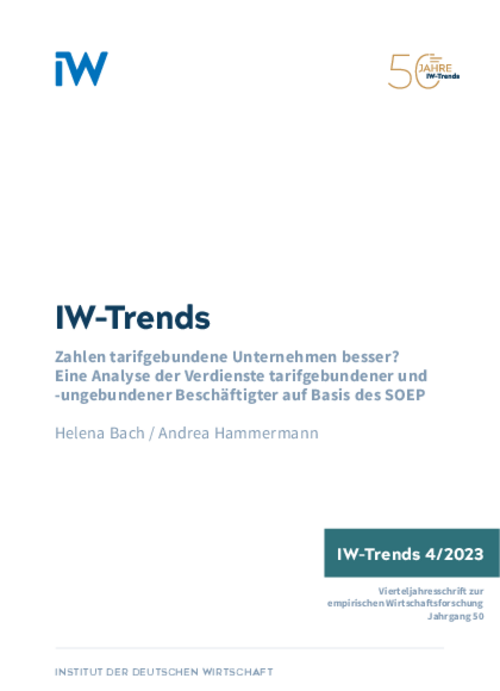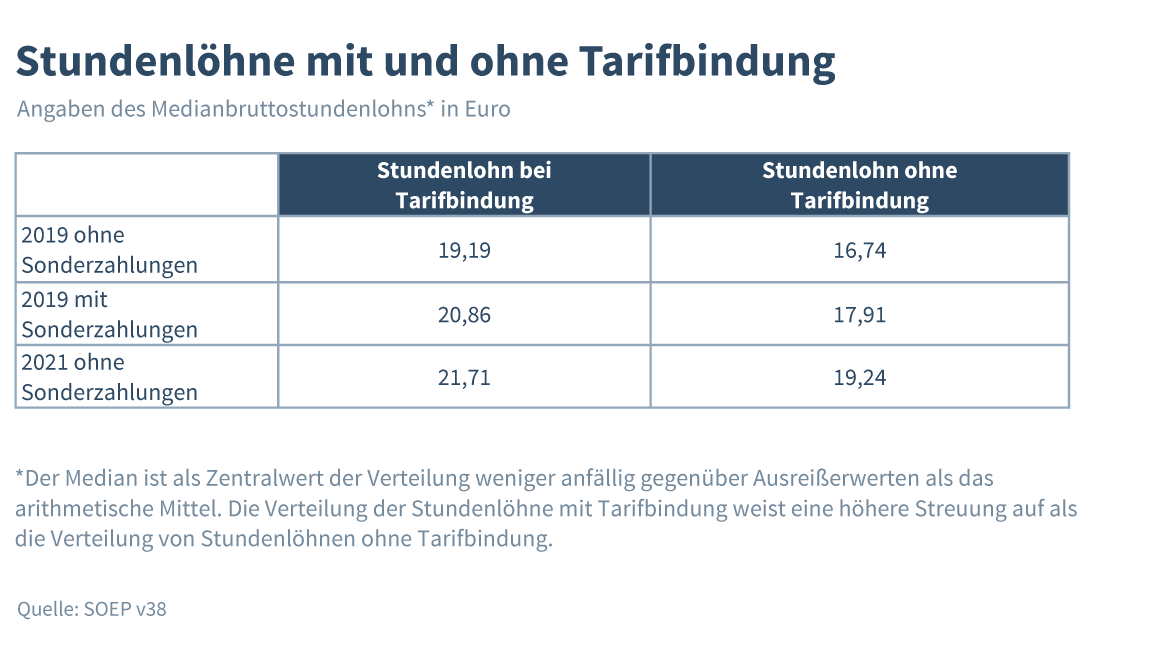When discussing the gradual erosion of collective bargaining coverage, reference is often made to the importance of collective agreements in securing high salaries for employees.

Do Companies Bound by Collective Agreements Pay Better?: An Analysis of the Earnings of Employees Covered and Not Covered by Collective Agreements Based on the SOEP

When discussing the gradual erosion of collective bargaining coverage, reference is often made to the importance of collective agreements in securing high salaries for employees.
The figure usually mentioned is a difference of over 20 per cent between the wages of employees who are paid according to collective agreements and of those who are not. However, this wage gap can largely be ascribed to structural differences between companies with and without collective agreements. Whether or not employees in companies bound by collective agreements are actually paid according to those agreements can also make a considerable difference, yet the majority of studies based on company data cannot take account of this distinction. The present empirical analysis based on the 2019 German Socio-Economic Panel (SOEP) indicates that the so-called unadjusted wage gap amounts to a mere 9 per cent at the individual level. With over 40 per cent of this latter figure attributable to differences in individual-, workplace- and company-related factors, our study points to an adjusted wage gap of only 5.2 per cent. A decomposition analysis shows that the pay gap is driven particularly by structural differences such as company size, the existence of a works council and the employees’ length of service.


Do Companies Bound by Collective Agreements Pay Better?: An Analysis of the Earnings of Employees Covered and Not Covered by Collective Agreements Based on the SOEP

More on the topic

German Wage Policy between Inflation and Stagnation: Are Conflicts with the Aims of Monetary Policy Looming?
After the economic and financial crisis of 2008/9, the German labour market soon began to recover, creating scope for a comparatively expansive wage policy.
IW
The Pros and Cons of Trade Union Membership
The decline in collective bargaining coverage in Germany is often attributed to the reluctance of companies to join an employers' association which negotiates collective agreements.
IW